Posted by Anita on 04.20.07 10:47 PM
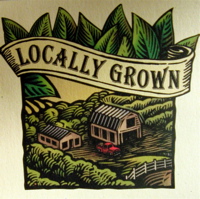 After much hemming and hawing, I decided there aren’t enough good reasons not join in next week’s Penny-Wise Eat Local Challenge. So, we’ve committed to spend a week — or, in our case, six days — eating as much as we can from within our foodshed.
After much hemming and hawing, I decided there aren’t enough good reasons not join in next week’s Penny-Wise Eat Local Challenge. So, we’ve committed to spend a week — or, in our case, six days — eating as much as we can from within our foodshed.
As if consuming foods grown or produced exclusively within a short radius of our home wasn’t hard enough, we’re also doing it on less than $144 a week, plus a mere $8 (!) for alcohol, in an effort to prove that it’s possible to be a locavore without spending any more than the average American two-person, two-earner family.
Coming from our house, where we have been known to spend $144 on a single dinner and $8 on one cocktail, this is going to be …interesting. But luckily, we have a gorgeous new kitchen where we love to cook these days. As for dining out, that’s one reason for our loose interpretation of the challenge week (the official start of the event isn’t until Monday the 23rd): We’re attending a benefit for a very worthy cause on Thursday night, and it doesn’t feel right to pinch pennies under the circumstances.
I’ve also done my best to plan meals for this week that are within the grasp of the average American home cook, both in terms of technique and ingredients. I’ve got a serious edge, living in the Bay Area, where we have so many great local artisans and farmers within close reach, so I didn’t want to stack the deck any further by choosing esoteric items or high-falutin’ preparations.
As far as exemptions go, I am allowing myself the so-called “Marco Polo rule”: I’m not tying myself to local spices, nor small quantities of condiments. Cameron’s going to continue to drink his coffee (it’s from Peet’s, a local establishment) and I feel no need to abandon my nasty Fresca habit. We’ll add the cost of these items to our budget, as well as any other non-local items we consume. We’re also buying bread that I have to assume is baked with non-local flour, but at least we’ll be supporting local artisans.
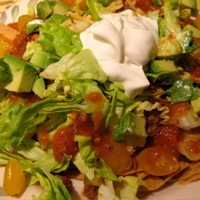 And because some of our favorite items come from slightly further afield, we’re going to extend our challenge radius to 200 miles, from the standard 100. But mostly, when we have a choice, we’ll opt for a product grown or made as close to us as possible. We’ll also be using fruits and herbs from our own garden, so perhaps that will keep our average distance down.
And because some of our favorite items come from slightly further afield, we’re going to extend our challenge radius to 200 miles, from the standard 100. But mostly, when we have a choice, we’ll opt for a product grown or made as close to us as possible. We’ll also be using fruits and herbs from our own garden, so perhaps that will keep our average distance down.
Tonight’s dinner was an old favorite, a taco-salad-like dish known in my family as “Walking Tostadas.” I sauteed some ground beef in a skillet, added some taco seasonings and a pureed tomato, and simmered. On the plate, the dish is simply a handful of broken tortilla chips, topped with the taco meat, then some shredded cheese, lettuce, salsa, tomatoes, avocado, and sour cream.
Here’s how it breaks down…
chips: 1/6 of a bag from Rancho Gordo (Napa / 50 mi) — $1
ground beef: 1 pound Prather Ranch (Shasta / 200 mi)– $6
tomato for puree: Whole Foods “locally grown” (Dinuba / 200 mi) — $0.66
lettuce: 1/2 of a romaine heart: Earthbound Farms (SJ Bautista / 88 mi) — $0.50
cheese: 1/2 wedge raw-milk chipotle cheddar Bravo Farms (Traver / 225 mi) — $1.50
crema: 2oz creme fraiche Bellwether Farms (Tomales / 50 mi) — $1.33
salsa: 2oz prepared Primavera (Sonoma / 50 mi) — $1
avocado: 1/2 a small one, part of a $3 grab bag from Will’s (Soledad / 130 mi) — $0.50
grape tomatoes: 1/6 of a large bunch from Balakian Farms (Reedly / 200 mi) — $0.50
(edit: The grape tomatoes were from Bruin Farms in Winters, 65 miles away)
Total this meal: $12.49 with plenty of leftover meat
I’m not going to go into this level of detail all week, I promise. But so far, I’ve estimated we’ll spend a good bit under our budget. Tomorrow’s trip to the farmers market will be the real test, but the most expensive items — meat and cheeses — are very predictable.
cooking, farmers markets, garden, locavore, other blogs, shopping
4 Comments »




Posted by Anita on 01.03.08 8:17 PM
 For us and for many of our friends, 2007 was a year of extremes and contradictions in our house and in our lives. I’ll spare you the maudlin, navel-gazing adjectives (oh, wait… shoot) and jump right into the highlight reel.
For us and for many of our friends, 2007 was a year of extremes and contradictions in our house and in our lives. I’ll spare you the maudlin, navel-gazing adjectives (oh, wait… shoot) and jump right into the highlight reel.
When January was just hours old, we rang in the new year with a streamlined version of our annual cassoulet. The next day, we invited you to tour our kitchens… yep, plural. The dysfunctional old one, the temporary kludge in the basement, and the yet-to-come remodeled dream. Later in the month, Cameron’s birthday was the impetus for the year’s most popular post: Boston Cream Pie cupcakes, which won the cupcake roundup for which they were created! Two other recipes created in the basement ‘camp kitchen’ — Fennel-Pear-Bleu salad and Golden Vegetable Bisque — turned into recurring winter favorites.
February was a slow month on the blog; we had some exciting progress on the kitchen remodel, then took a much needed hiatus to spend time with family after my dad passed away. Mom and I whipped up a batch of her justifiably famous banana bread, and Cameron cheered us up with a hopeful post about the promise of summer fruit from spring’s blossoms.
A March business trip turned up some pretty dismal dining experiences in the Big Apple, but the week was redeemed by fabulous cocktails at Pegu Club, among other worth establishments. Back on the home front: Can it have been nine whole months since we discovered our beloved Gialina? Our early crush has blossomed into a full-blown love affair with this solid, cozy Glen Park pizza bistro. By the end of the month, the kitchen wasn’t quite finished, but we’d moved back upstairs and started cooking. Our first meal: heritage-breed chicken, pasta with pan gravy, and broccolini.
 Not long after that, we hosted our first blog event: April’s edition of Mixology Monday featured all manner of Champagne cocktails… more than 16 in all. At Eastertime, Mom came to visit, and DPaul and Sean joined us for a traditional ham supper beginning with a stunning green-pea soup. Sam invited us all to show the world that English food is no joke, and Cameron responded with St. John’s roasted marrow bones and parsley salad from Nose to Tail. The end of April brought our first attempt at locavore eating, courtesy of the Penny-Wise Eat Local Challenge. Could we eat exclusively local food for a whole week on just $140? (Answer: Hell yes.)
Not long after that, we hosted our first blog event: April’s edition of Mixology Monday featured all manner of Champagne cocktails… more than 16 in all. At Eastertime, Mom came to visit, and DPaul and Sean joined us for a traditional ham supper beginning with a stunning green-pea soup. Sam invited us all to show the world that English food is no joke, and Cameron responded with St. John’s roasted marrow bones and parsley salad from Nose to Tail. The end of April brought our first attempt at locavore eating, courtesy of the Penny-Wise Eat Local Challenge. Could we eat exclusively local food for a whole week on just $140? (Answer: Hell yes.)
With May’s warmer weather, we started breaking out the tall, cool drinks. A tonic tasting was first on the list. (Stay tuned for an update with two new contenders). Speaking of drinks, we paid a visit to Seattle and made our first trip to Vessel, home of the inimitable Mr. Jamie Boudreau. Back home at the end of the month, I told you all about the pleasures of learning to cook Thai with Kasma.
 Come June, Cameron penned a fairy-tale ode to his favorite new/old restaurant, Two. We marked the 40th anniversary of Dorothy Parker’s demise with a round of classic Martinis. With the finishing touches in place, the kitchen remodel was finally ready for her closeup, Mr. DeMille. We headed up to Napa, new camera in tow, to pick walnuts for our annual batch of Nocino at Mr. Hoffman’s orchard. Rounding out the month, Cameron began his full-circle tour of the edible landscape in our backyard.
Come June, Cameron penned a fairy-tale ode to his favorite new/old restaurant, Two. We marked the 40th anniversary of Dorothy Parker’s demise with a round of classic Martinis. With the finishing touches in place, the kitchen remodel was finally ready for her closeup, Mr. DeMille. We headed up to Napa, new camera in tow, to pick walnuts for our annual batch of Nocino at Mr. Hoffman’s orchard. Rounding out the month, Cameron began his full-circle tour of the edible landscape in our backyard.
July in The City meant that summer was in full swing! Time to grind some beef for the season’s first backyard burgers. Sean taught us how to make perfect Mint Juleps, and we pitted pounds and pounds of fruit for homemade Maraschino cherries. We hosted four carnivorous friends for an afternoon of sausage-making mayhem, then wrapped up the month using our new ‘corn zipper’ to make a gorgeous summer souffle — a plate-licker of a dish if ever there was one.
In August, a young Cameron’s fancy turned to home-cured gravlax. We honored Mrs. Child with a supper of ham in piperade and souffle potatoes. Oh no we di-int make Piña Coladas! (Oh yes we did, and they rocked.) But sometimes you have a flop or two in the kitchen; we had a whole week of them, dammit. Thankfully, we were able to get some decent food into our bellies when we headed north to Cookie’s house to share a retro-style potluck with other Bay Area bloggers.
 As the rest of the Bay Area blogoverse headed to Bi-Rite Creamery to celebrate September’s Indian summer, we snuck over to the Mission District’s other local treasure of an ice-cream shop, Mitchell’s. As always, there was plenty to drink at our house: An ode to our local Hetch-Hetchy water, a batch of homemade pear-infused brandy, and a cocktail in honor of Cameron’s favorite musical.
As the rest of the Bay Area blogoverse headed to Bi-Rite Creamery to celebrate September’s Indian summer, we snuck over to the Mission District’s other local treasure of an ice-cream shop, Mitchell’s. As always, there was plenty to drink at our house: An ode to our local Hetch-Hetchy water, a batch of homemade pear-infused brandy, and a cocktail in honor of Cameron’s favorite musical.
Some folks questioned our sanity, but yes, we really did can 100 pounds of Mariquita Farm tomatoes last October. Spending a couple of weeks at Mom’s meant lots of comfort food: a revamped Creole Rice Casserole, and our entry into National Meatloaf Day. Later in the month, we went public with our locavore status, plunging headlong into the Dark Days Challenge. A search for an all-local eats and drinks led us to an eerie tale of murder most fowl and my new favorite cocktail: Gin, honey, and lemon is indeed the Bee’s Knees.
November was obviously booze month: I won the inaugural edition of Raiders of the Lost Cocktail, and got to choose the next theme ingredient: Benedictine. We learned the truth about Mai Tais at Tiki-Ti, took our place behind the bar chez Hedonia, and won a “Does My Blog Look Good in This?†mention for… wait for it… a cocktail photo.
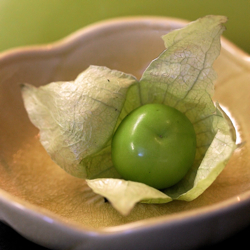 Which brings us barreling on home to December… what a month! After we shared our favorite way to gobble up turkey leftovers (that’d be Enchiladas suizas), we bellied up to the bar for a sweet vermouth tasting, and spent seven straight nights eating locally sourced suppers. While preoccupied with Menu for Hope, were stunned to be nominated for Best Blog Covering Drinks — we never expected to win! (Thank you all, again. Wow.)
Which brings us barreling on home to December… what a month! After we shared our favorite way to gobble up turkey leftovers (that’d be Enchiladas suizas), we bellied up to the bar for a sweet vermouth tasting, and spent seven straight nights eating locally sourced suppers. While preoccupied with Menu for Hope, were stunned to be nominated for Best Blog Covering Drinks — we never expected to win! (Thank you all, again. Wow.)
So yeah… highest highs, lowest lows, and all the what-have-you in between. I wouldn’t repeat this year for love or money, but I can’t say it wasn’t without its memorable occasions. I know it seems trite to say we couldn’t have done it without you, but it’s true — we’re truly blessed to have so many passionate subscribers, thoughtful commenters, and fabulous foodie friends.
I hope 2008 brings you everything you want, both in and out of the kitchen.
other stuff
8 Comments »




Posted by Anita on 12.26.07 12:45 PM
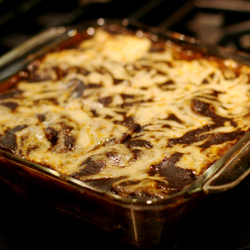 Getting the house — and the fridge — ready for our 10-day Christmas absence was an enormous pain in the ass. Truthfully, I enjoy the puzzle of combining fresh food and freezer fodder to make reasonably coherent meals, but sometimes this happens at the expense of our 90%-local Dark Days Challenge goal.
Getting the house — and the fridge — ready for our 10-day Christmas absence was an enormous pain in the ass. Truthfully, I enjoy the puzzle of combining fresh food and freezer fodder to make reasonably coherent meals, but sometimes this happens at the expense of our 90%-local Dark Days Challenge goal.
A case in point: We needed to use up tortillas (local), beans (ditto) and salsa (yep), plus an assortment of cheeses (likewise) — a natural set of ingredients for BudÃn Azteca, a.k.a. tortilla pie. So we defrosted the last of the local Thanksgiving turkey… and a decidedly non-local batch of mole sauce. We could say that the chiles qualify as seasonings and the chocolate’s a baking supply — both of which are exempt from the challenge. But given that we made and froze this sauce early last spring, long before even our first stab at locavorism, that seems a bit far-fetched.
 Our second attempt was less of a stretch. With a half-jar of home-canned tomatoes, a few strips of Fatted Calf pancetta, half a ball of Belfiore mozzarella, and a handful of Far West mushrooms, we had all the makings of a couple of pizzas. We’ll overlook that the frozen pizza dough was made months ago with non-local flour (it’s still an exemption, after all, even if we have found some local sources for grains). Add a salad of Star Route Farms romaine, radicchio, and radishes, and we could call this our first true 90% meal of the week.
Our second attempt was less of a stretch. With a half-jar of home-canned tomatoes, a few strips of Fatted Calf pancetta, half a ball of Belfiore mozzarella, and a handful of Far West mushrooms, we had all the makings of a couple of pizzas. We’ll overlook that the frozen pizza dough was made months ago with non-local flour (it’s still an exemption, after all, even if we have found some local sources for grains). Add a salad of Star Route Farms romaine, radicchio, and radishes, and we could call this our first true 90% meal of the week.
Hitting the mark without a single cheat, Tuesday night’s steak dinner featured Prather Ranch ribeye, an assortment of stray Little’s potatoes mashed with Straus cream and Clover butter, and another big salad, this one dressed with Point Reyes Blue and Bariani olive oil. Yum. Friday’s pasta night was another clean sweep: Our usual Bolognese sauce over Eduardo’s, a carrot-and-radish-topped salad, and garlic toast made from the heels of our Acme pain de mie loaf.
All in all, not a bad week of local eating, given everything else that we had going on.
It’s been a while since we’ve added any new local products to our pantry, but we discovered not just one variety but a whole assortment of dried chiles at the Tierra Vegetables stand at the Ferry Plaza market. Maybe, just maybe, the next time we pop a package of mole out of the freezer, we won’t be fudging at all.


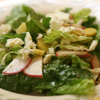
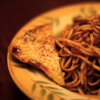

BudÃn Azteca
1 to 2 cups shredded chicken or turkey
1/2 to 1 cup prepared salsa
6 to 8 corn tortillas
2 cups mashed black or pinto beans
2 cups mole (recipe follows)
1/2 cup chicken stock, plus more as needed
2 cups shredded melting cheese, such as Jack or mozzarella
sour cream, sliced radishes, and cilantro for garnish
Preheat oven to 350°F.
In a saucepan, warm the beans over medium-low heat, thinning with chicken stock or water to a spreadable consistency.
In a separate pan, warm the meat with the salsa.
In a third pan, heat the molé, thinning with 1/2 cup or more of chicken stock, to a tomato-sauce consistency.
Heat the tortillas in a skillet or over an open flame. Cut each tortilla into quarters and keep warm, wrapped in a clean dishtowel until ready to use.
Set aside 3/4 cup of the mole sauce for later use. Spread a spoonful of the remaining thinned sauce on the bottom of a 9×9 pan. Layer 6 to 8 tortilla quarters on top of the sauce, followed by 1/3 of the beans, 1/3 of the meat, a quarter of the cheese, and another small drizzle of the sauce. Repeat layering until all of the beans and meat have been used. Top the stack with the reserved 3/4 cup of sauce and the last quarter of cheese.
Bake, uncovered, 30 to 45 minutes, or until the sauce is bubbly and the casserole is warmed through to the center. If the cheese browns before the center of the pie is heated, cover with foil to prevent overbrowning. (Do not cover before this stage, or you will end up with cheese stuck to the foil.)
Let the casserole sit 5 minutes before cutting. Serve with a green salad on the side, and your choice of garnishes.
—–
Mole de la Suegra
– adapted from Big Small Plates
2oz dried chiles negros
2oz dried chiles anchos
1/4 cup sesame seeds
1T whole black peppercorns
6 whole cloves
5 to 6 T lard or oil
2 slices french bread
1 large tomato, halved
1 large onion, cut into 4 thick slices
1 large clove garlic
2T salt
4 cups chicken broth
1 disk Mexican chocolate, coarsely chopped
Stem and seed the chiles, reserving the seeds in a small bowl, then gently toast the chiles in a skillet over medium heat just until soft; a couple of wisps of smoke are okay, but do not let them burn or your sauce will be bitter. Cover the toasted chiles with warm water and set aside.
Over high heat, toast the chile seeds lightly, continuously shaking the pan for 30 to 60 seconds. Return the seeds to their bowl. Toast the sesame seeds until lightly golden. Place them in the bowl with the chile seeds and let cool to room temperature. When sesame and chile seeds have cooled, grind them together with the cloves and peppercorns in a coffee grinder.
Put a large bowl next to the stove. In the skillet over medium heat, heat 2T of the lard until it shimmers. When fully heated, fry the bread until golden on both sides. Place the fried bread in the bowl. If needed, add another tablespoon of lard to the pan and caramelize the tomato, 5 to 7 minutes. When heated through and well browned, scoop the tomato into the bowl with the bread. Add more lard, if needed, and caramelize the onion slices and garlic, adding them to the bowl when well browned (7 to 10 minutes).
Drain the chiles, reserving the soaking liquid, and add them to the bowl. Add the ground seeds and spices and 2T salt to the bowl, and puree with a stick blender until smooth. (Alternately, you can blend in 2 to 3 batches in a conventional blender.) Add enough of the chile-soaking water to the puree to achieve a pourable consistency.
In a heavy saucepan over high heat, warm the rest of the lard. Before the fat smokes, carefully pour the sauce into the pan and fry for 1 to 2 minutes, stirring constantly. Reduce the heat and add the broth; simmer 10 minutes. Add the chocolate and simmer an additional 30 to 45 minutes. Use immediately, or cool to room temperature before storing.
Note: Unlike chicken stock or pasta sauce, we don’t freeze mole directly in quart-size bags. Like other oily sauces — curry pastes, pesto, etc. — we chill and freeze it in 1- and 2-cup plastic storage containers. When fully frozen, the sauce pops out of the containers and can be placed in vacuum-seal or Ziploc bags for longer storage. Be sure to remove the puck of sauce from the bag before thawing, to keep sauce from sticking to the inside of the bag.
locavore, Mexican, recipes
4 Comments »




Posted by Anita on 11.20.07 11:48 AM
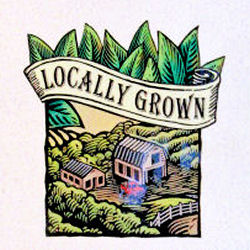 In lieu of my usual meal recap, this week’s Dark Days post touches on the retail side of the equation. Despite our weekend in Los Angeles — which obviously kept us away from our beloved farmers market — and Cameron’s four-day business trip, I managed a number of 100-mile meals.
In lieu of my usual meal recap, this week’s Dark Days post touches on the retail side of the equation. Despite our weekend in Los Angeles — which obviously kept us away from our beloved farmers market — and Cameron’s four-day business trip, I managed a number of 100-mile meals.
I’m sure you’re not particularly interested in the details thrown-together dinners of lazy mac & cheese, wintertime BLTs (with tomato bourbon jam as the “T”), mushroom omelets, or another rehash of Friday spaghetti night… but if you’re feeling left out, I’ve put a few photos on Flickr.
——
As good as we Bay Area locavores have it when it comes to restaurants and farmers markets, the notion of shopping with local products in mind seems to have gained very little traction in the retail world. Awareness of the benefits of locally grown and locally produced foods is spreading rather slowly beyond the rarefied world of the farmers-market set. It’s a difference that’s become more obvious as we seek out a wider variety of local ingredients as part of the Dark Days Challenge.
As I mentioned last month, Whole Foods recently made a much-publicized commitment to support local farms and purveyors. Rather than funneling all orders through a regional warehouse (where demands might be too great for any small farmer), Whole Foods produce managers can now literally buy produce off their loading docks from the people who raise it. Our local Whole Foods stores are following through on the consumer side, with little laminated signs touting the county of origin of most fruits and vegetables. Although the produce is far from exclusively local — a good deal still comes from the southern hemisphere — at least the labels allow consumers to make an educated choice.
Better yet, Whole Foods’ signage has been spreading beyond the boundaries of the produce section. Locally made cheeses are tagged at the service counter; locally produced pastas and sauces are flagged in the deli case, and locally sourced milk and butters get their due in the dairy aisle. PR spin or no, it’s an invaluable resource for those of us trying to reduce our food-footprint without turning into obsessive research nuts.
Even more amazingly, I noticed similar signs dotting the shelves at local supermarket chain Mollie Stone’s California Street location. Placed by an organization called Eat Local SF, these ‘shelf talkers’ are a little more generic than those at Whole Foods — they simply say “eat local”, with no point of origin listed. They’re also a bit less exclusive: Any prepared or processed food made within 250 miles is fair game, regardless of where the ingredients were sourced. (I also noticed a tag under olives bottled by a Southern California company with ‘Napa’ in its name, which were clearly labeled “Product of Spain”.)
But still, it’s baby steps in the right direction, and a stunning turnaround: The same chain didn’t even bother to respond last spring when I wrote them to explain why I was taking my business elsewhere (their employees couldn’t provide information on where their food was sourced). They may not be stocking their shelves any differently than in the past, but this one small bit of communication is making a visible impact on my customer satisfaction.
 If a mainstream chain like Mollie Stone’s can improve, why not the little guys, the ones who painstakingly cultivate an aura of hippie chic? Our neighborhood market — a crunchy outpost called Good Life Grocery — features a decent produce section given the store’s diminutive size. But on a recent trip, we spied exactly one tag from a local farm, and not a single store-placed mention of distances or purveyors. The new-ish Canyon Market, a similar shop over the hill in Glen Park, is similarly bereft of locavore-friendly signage. Which begs the question: When your produce section includes just a few dozen items, would it really be a lot of extra work to let folks know where their food’s grown?
If a mainstream chain like Mollie Stone’s can improve, why not the little guys, the ones who painstakingly cultivate an aura of hippie chic? Our neighborhood market — a crunchy outpost called Good Life Grocery — features a decent produce section given the store’s diminutive size. But on a recent trip, we spied exactly one tag from a local farm, and not a single store-placed mention of distances or purveyors. The new-ish Canyon Market, a similar shop over the hill in Glen Park, is similarly bereft of locavore-friendly signage. Which begs the question: When your produce section includes just a few dozen items, would it really be a lot of extra work to let folks know where their food’s grown?
My current benchmark for locavore signage is Rainbow Grocery, a SOLE shopper’s paradise. Their produce bins sport detailed signs outlining each product’s farming methods, organic certification authority, farm name, and place of origin. Their bulk-foods section includes information about not just the origin and ownership of local products, but the milling location of dry goods like flours and meals (most of which are sent out of state for processing, alas). An entire shelf in their justly famed cheese case is devoted strictly to local products, and a detailed list on their site outlines distances, dairies, and varieties stocked. Even their vast herb, spice, and tea bins are stocked primarily with products harvested in Washington, Oregon, and the California coast.
In time, as customers demand it, perhaps we’ll see the locavore focus move more deeply into the mainstream, much like organic vegetables did over the last decade. In the meantime, we’ll direct our food dollars toward the farmers market, direct-supplier shops like Prather Ranch and Cowgirl Creamery, and the handful of retail outlets that support the choices we’re making.
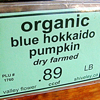

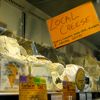
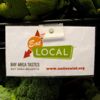
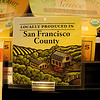
Whole Foods, Potrero Hill
750 Rhode Island Street (x 17th Street)
San Francisco CA 94107
415.552.1155
Mollie Stone’s Market, Pacific Heights
2435 California Street (x Fillmore Street)
San Francisco, CA 94115
415.567.4902
Good Life Grocery, Bernal Heights
448 Cortland Avenue (x Andover Street)
San Francisco, CA 94110
415.648.3221
Canyon Market, Glen Park
2815 Diamond Street (x Bosworth)
San Francisco, CA 94131
415.586.9999
Rainbow Grocery Cooperative
1745 Folsom Street (x Division/13th)
San Francisco, CA 94103
415.863.0620
locavore, shopping
8 Comments »




Posted by Anita on 10.17.07 7:35 AM
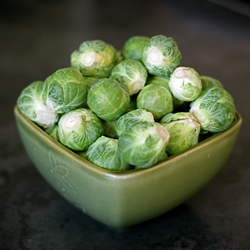 So many variables factor into the bounty of the Bay Area’s foodshed: The density and affluence of our population creates a bumper crop of food-obsessed consumers, our progressive social milieu fosters an interest in sustainability, and the richness of our restaurant scene rewards ambitious farmers.
So many variables factor into the bounty of the Bay Area’s foodshed: The density and affluence of our population creates a bumper crop of food-obsessed consumers, our progressive social milieu fosters an interest in sustainability, and the richness of our restaurant scene rewards ambitious farmers.
But underneath all that is the inescapable fact that we live in one of the most fertile food-growing regions in the country. Add to that an eye-crossing number of microclimates, and the result is an astounding variety of warm-weather crops from just-spring to deep autumn. Even in winter, our markets offer an almost unbelievable abundance.
I know that most other regions don’t have it so easy; reading the seasonal posts of other food bloggers brings that fact home. Eating locally, especially year-round, can be a struggle for even the most dedicated fanatic. In most areas, the first frost pretty much spells doom for the locavore agenda, save for home-preserved harvests, hardy winter crops, and often-pricey meats and cheeses.
So when I read on the Eat Local Challenge blog that an autumn-into-winter locavore event was afoot, I had to check it out. Laura — who writes a charming blog called Urban Hennery out of Everett, Washington — is blogging her latest experiment: Feeding herself, her husband, and her friends on local foods throughout the remainder of the year. She’s challenged anyone interested to join her, christening the event the Dark Days Challenge.
I signed on with Laura without giving the idea much thought… without realizing that this snap decision means we’re going to become a lot more candid about the choices we’re making when we shop. This isn’t just a one-week flirtation with locavore exhibitionism, as we’ve done before. But I know we can do it because it’s what we’ve been doing pretty much all summer long, on the sly. And, honestly? Not doing it here — in what must be the easiest place in the country to attempt this challenge — would feel churlish.
My name’s Anita, and I’m …a locavore. There, I said it.
All joking aside, I’ve been bashful of talking about what we’re doing, mostly because I am leery of sounding sanctimonious or self-congratulatory. Food choices are incredibly personal, and if you have strong opinions about what you eat and why, it can be hard to talk about them without seeming snobbish. Or condescending. Or egotistical. Or just vain.
So, in order to salve my fears, I’ll say this and then trust that you’ll give us the benefit of the doubt: Eating sustainable, local, and organic food whenever possible is important to us. But by sharing what we’re doing, we are in no way condemning anyone else’s choice.
Enough of that, and full speed ahead. We’re on this bandwagon for the full ride. Expect to hear about our locavore adventures — the triumphs and the challenges, as Laura says — throughout the fall. We’ll continue to eat as locally as we can as often as we can, and write about it at least once a week until New Year’s Day.
 Laura has encouraged her Dark Days cohorts to modify the house rules to suit their circumstances. Based on our experience in past challenges, we’ve held ourselves to a harder line with some items (like produce miles) and taken a more realistic approach to others (like carbs). Here’s our general game-plan:
Laura has encouraged her Dark Days cohorts to modify the house rules to suit their circumstances. Based on our experience in past challenges, we’ve held ourselves to a harder line with some items (like produce miles) and taken a more realistic approach to others (like carbs). Here’s our general game-plan:
- We will continue to cook locally as often as we can, with a baseline of two dinners per week made from 90% local ingredients.
- We will write about at least two meals a week made with as many local ingredients as we can source.
- Local for us will be a 100-mile radius for produce and a 200-mile radius for protein. Strong preference will be given to items purchased direct at the farmers market rather than retail.
- We’re making the usual ‘Marco Polo’ exemptions for seasonings. We’re also making exceptions for flour, dried pasta, white rice, and polenta — we have no local sources of these ingredients, and man does not live by potatoes and bread alone. We will try to source baking ingredients locally, but I don’t expect to find much beyond nuts, and I won’t go through the holidays without baking.
- We’ll try to limit processed foods to those produced within a 50-mile radius. We’ll try to determine how much local ingredient sourcing they’re doing, and talk about it in our posts.
- We’ll continue with the challenge through the end of the year, and then re-evaluate on New Year’s Day along with other participants.

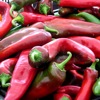

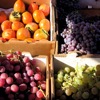
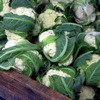
locavore, other blogs
8 Comments »




Posted by Anita on 04.26.07 12:15 PM
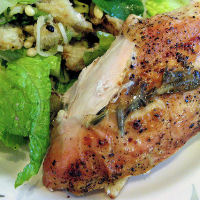 Here I was, feeling all smug about having cooked and eaten six days worth of local, affordable, and (dare I brag?) delicious food for the Penny-Wise Eat Local Challenge. And then I read CookieCrumb’s post about eating wheatberries to keep your carbs up… and instantly felt terribly guilty about all the bread we’ve eaten this week. But damn, this challenge was hard enough, even with all of the exemptions we claimed.
Here I was, feeling all smug about having cooked and eaten six days worth of local, affordable, and (dare I brag?) delicious food for the Penny-Wise Eat Local Challenge. And then I read CookieCrumb’s post about eating wheatberries to keep your carbs up… and instantly felt terribly guilty about all the bread we’ve eaten this week. But damn, this challenge was hard enough, even with all of the exemptions we claimed.
Every time I reached for a bottle of soy sauce or a pinch of chile, I repeated to myself a favorite quote from the Chronicle article profiling Cookie and her husband Cranky’s early take on the challenge: “One of the things you learn when you do this is that [eating] local is not a cult,” says [Cranky]. “You learn about things and you make exceptions.”
Keeping what I now call “The Cranky Principle” in mind, I’m proud of our results. We certainly did well in the budget department: Our 6-day food expenditures came to $123.73 — equivalent to $144.35 for a 7-day week, or just 35 cents over budget. (If you’re curious about all the gory details, feel free to peek at the spreadsheet, which also details the distance the food travelled to our plates. Oh, and there are some pictures — obviously not everything we ate is here, but it’s a good assortment.)
A few observations on our week:
We ate about the same quantity of food as usual, and about the same protein-to-carbs ratio. We ate more ground meat than we do in a typical week, although in truth I think that if I had had more time to plan my menu, and more time to shop around, could have done better in this regard.
 I bought more food at the grocery store than I usually do, and less from the farmers market. Sad to say, the ‘Big Organic’ producers like Earthbound Farms make it hard to walk by that $3 bag of (four!) romaine hearts when the budget’s tight. When it came down to it, I suspected the premium for farm-fresh produce would eat into the budget. I’ll be glad to leave the shrinkwrapped lettuce behind next week, though, and go back to my delicate Little Gems.
I bought more food at the grocery store than I usually do, and less from the farmers market. Sad to say, the ‘Big Organic’ producers like Earthbound Farms make it hard to walk by that $3 bag of (four!) romaine hearts when the budget’s tight. When it came down to it, I suspected the premium for farm-fresh produce would eat into the budget. I’ll be glad to leave the shrinkwrapped lettuce behind next week, though, and go back to my delicate Little Gems.
We didn’t do as good a job of eating seasonally as we could have. I’ll chalk some of this up to my not planning ahead sufficiently — we jumped into the challenge with less than 24 hours’ notice — but a lot of it did come down to the fact that the things we like to eat at this time of year aren’t terribly cheap, yet. So I fell back on a lot of the foods I used to make when money was tighter: Roast chicken, meatloaf, sandwiches, stir-fries… and lots of leftovers for lunch.
Speaking of lunch: Forgetting your brown bag can be disastrous. I left my chicken-salad sandwich in the fridge at home on Tuesday! Luckily, a short streetcar ride put me at the Ferry Building, where the Tuesday lunchtime market meant I had my choice of Donna’s tamales (too long a line), Prather or Taylor’s burgers (too pricey), Acme ‘sandwiches’ (too skimpy!), and Mijita’s chilaquiles. Guess which one this Mexican-breakfast addict chose? At $7 a plate, they’re not a bargain, but compared to Mijita’s other choices, they’re a steal. My forgetfulness did bust the budget, but only by the teensiest bit.
 Our revised alcohol budget of $9.75 per week for two people still seems incredibly low. We went to 150% of budget and spent $14, which bought us a six-pack of Speakeasy Untouchable Pale Ale and a 375 ml half-bottle of Bonny Doon Big House Red. And yes, we found ourselves standing in front of the fridge pondering the empty booze shelf by the middle of the week. Next time, maybe we’ll buy a big bottle of Anchor’s Old Potrero Rye and drink a fifth of it — very slowly — mixed with good ol’ Hetch-Hetchy branch water. (Doesn’t sound very food-friendly, does it?)
Our revised alcohol budget of $9.75 per week for two people still seems incredibly low. We went to 150% of budget and spent $14, which bought us a six-pack of Speakeasy Untouchable Pale Ale and a 375 ml half-bottle of Bonny Doon Big House Red. And yes, we found ourselves standing in front of the fridge pondering the empty booze shelf by the middle of the week. Next time, maybe we’ll buy a big bottle of Anchor’s Old Potrero Rye and drink a fifth of it — very slowly — mixed with good ol’ Hetch-Hetchy branch water. (Doesn’t sound very food-friendly, does it?)
I definitely enjoyed taking part in the challenge. Even though most of our food already came from local or semi-local sources, participating here opened my eyes to both the variety of items in our foodshed, and the distances that even our ‘local’ farmers market food travels to get to our kitchen. I have to admit that I’m looking forward to being able to just shop and cook from the hip, without taking notes or making calculations. And I know that despite all of the ways we stretched the rules, we learned a lot.
Most of the participants are just past the halfway mark of their challenge — we started early and shortened our week to 6 days due to a previous dinner commitment tonight and a weekend full of travel. For an amazing peek into the nuts and bolts of eating locally, check out all 20 of the participating bloggers over on the PELC roundup page. I’m utterly in awe of folks who are giving this a go in places like Maine and Syracuse, where spring has just barely sprung.
cooking, farmers markets, locavore, other blogs, shopping
Comments Off on Our Penny-Wise week




 After much hemming and hawing, I decided there aren’t enough good reasons not join in next week’s Penny-Wise Eat Local Challenge. So, we’ve committed to spend a week — or, in our case, six days — eating as much as we can from within our foodshed.
After much hemming and hawing, I decided there aren’t enough good reasons not join in next week’s Penny-Wise Eat Local Challenge. So, we’ve committed to spend a week — or, in our case, six days — eating as much as we can from within our foodshed. And because some of our favorite items come from slightly further afield, we’re going to extend our challenge radius to 200 miles, from the standard 100. But mostly, when we have a choice, we’ll opt for a product grown or made as close to us as possible. We’ll also be using fruits and herbs from our own garden, so perhaps that will keep our average distance down.
And because some of our favorite items come from slightly further afield, we’re going to extend our challenge radius to 200 miles, from the standard 100. But mostly, when we have a choice, we’ll opt for a product grown or made as close to us as possible. We’ll also be using fruits and herbs from our own garden, so perhaps that will keep our average distance down.



 For us and for many of our friends, 2007 was a year of extremes and contradictions in our house and in our lives. I’ll spare you the maudlin, navel-gazing adjectives (oh, wait… shoot) and jump right into the highlight reel.
For us and for many of our friends, 2007 was a year of extremes and contradictions in our house and in our lives. I’ll spare you the maudlin, navel-gazing adjectives (oh, wait… shoot) and jump right into the highlight reel. Not long after that, we hosted our first blog event: April’s edition of Mixology Monday featured all manner of
Not long after that, we hosted our first blog event: April’s edition of Mixology Monday featured all manner of  Come June, Cameron penned a fairy-tale ode to his favorite new/old restaurant,
Come June, Cameron penned a fairy-tale ode to his favorite new/old restaurant,  As the rest of the Bay Area blogoverse headed to Bi-Rite Creamery to celebrate September’s Indian summer, we snuck over to the Mission District’s other local treasure of an ice-cream shop,
As the rest of the Bay Area blogoverse headed to Bi-Rite Creamery to celebrate September’s Indian summer, we snuck over to the Mission District’s other local treasure of an ice-cream shop,  Which brings us barreling on home to December… what a month! After we shared our favorite way to gobble up turkey leftovers (that’d be
Which brings us barreling on home to December… what a month! After we shared our favorite way to gobble up turkey leftovers (that’d be  Getting the house — and the fridge — ready for our 10-day Christmas absence was an enormous pain in the ass. Truthfully, I enjoy the puzzle of combining fresh food and freezer fodder to make reasonably coherent meals, but sometimes this happens at the expense of our 90%-local
Getting the house — and the fridge — ready for our 10-day Christmas absence was an enormous pain in the ass. Truthfully, I enjoy the puzzle of combining fresh food and freezer fodder to make reasonably coherent meals, but sometimes this happens at the expense of our 90%-local 

















 Here I was, feeling all smug about having cooked and eaten six days worth of local, affordable, and (dare I brag?) delicious food for the
Here I was, feeling all smug about having cooked and eaten six days worth of local, affordable, and (dare I brag?) delicious food for the  I bought more food at the grocery store than I usually do, and less from the farmers market. Sad to say, the ‘Big Organic’ producers like Earthbound Farms make it hard to walk by that $3 bag of (four!) romaine hearts when the budget’s tight. When it came down to it, I suspected the premium for farm-fresh produce would eat into the budget. I’ll be glad to leave the shrinkwrapped lettuce behind next week, though, and go back to my delicate Little Gems.
I bought more food at the grocery store than I usually do, and less from the farmers market. Sad to say, the ‘Big Organic’ producers like Earthbound Farms make it hard to walk by that $3 bag of (four!) romaine hearts when the budget’s tight. When it came down to it, I suspected the premium for farm-fresh produce would eat into the budget. I’ll be glad to leave the shrinkwrapped lettuce behind next week, though, and go back to my delicate Little Gems. Our
Our